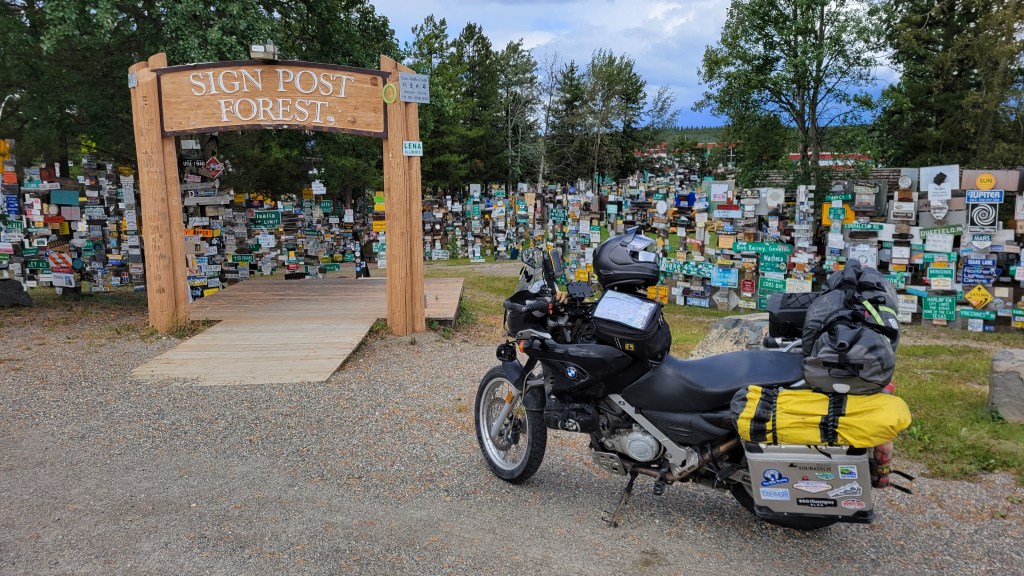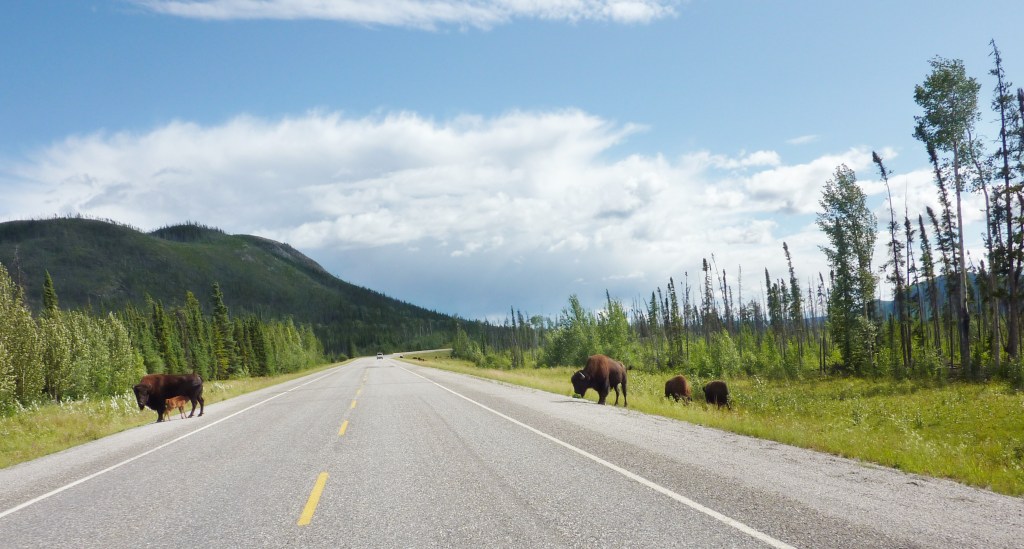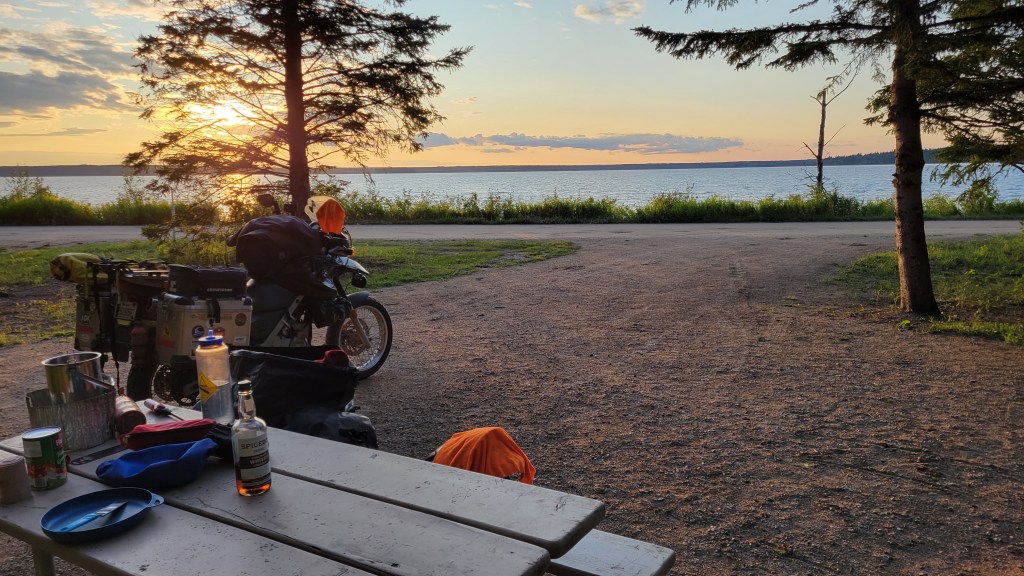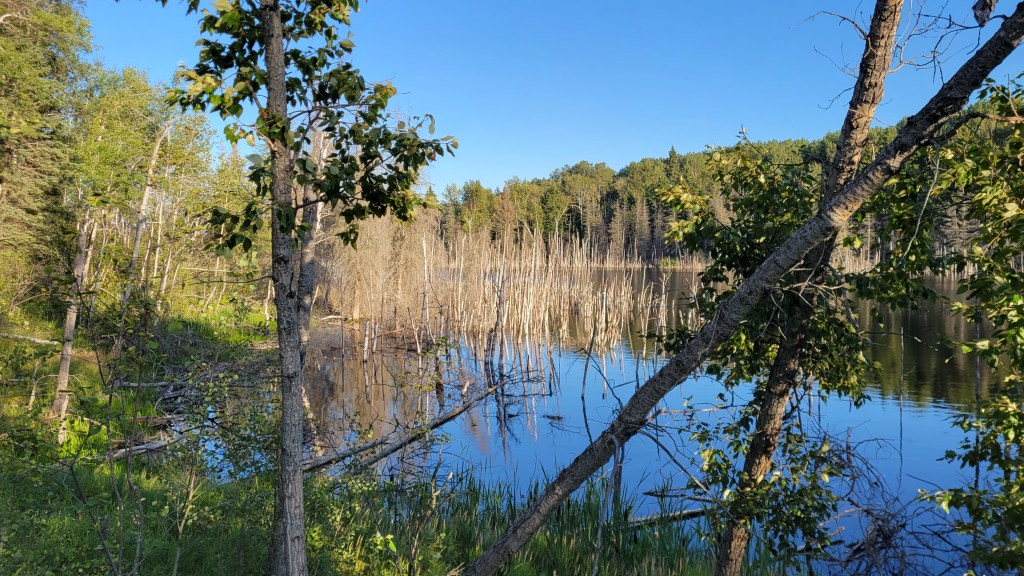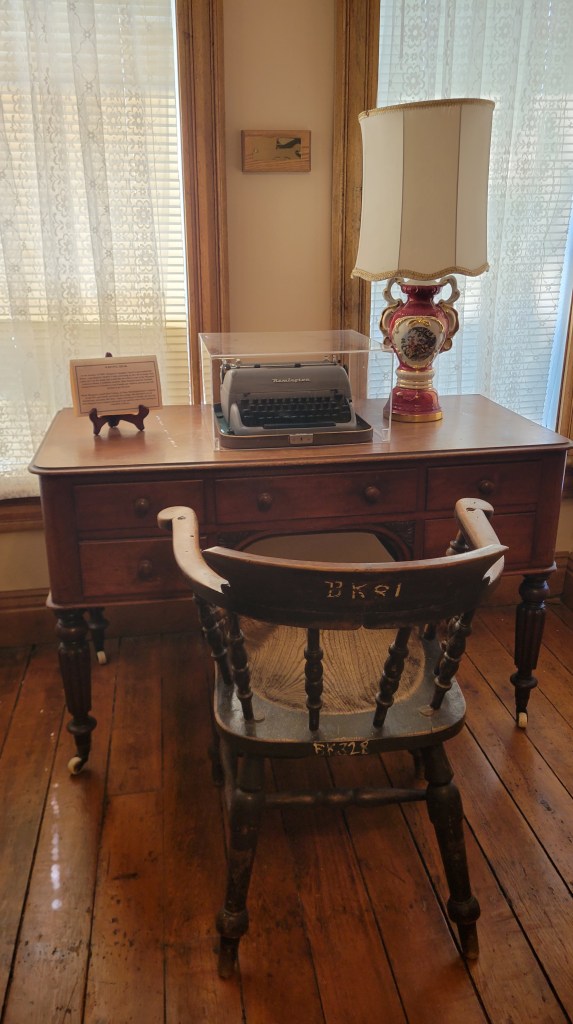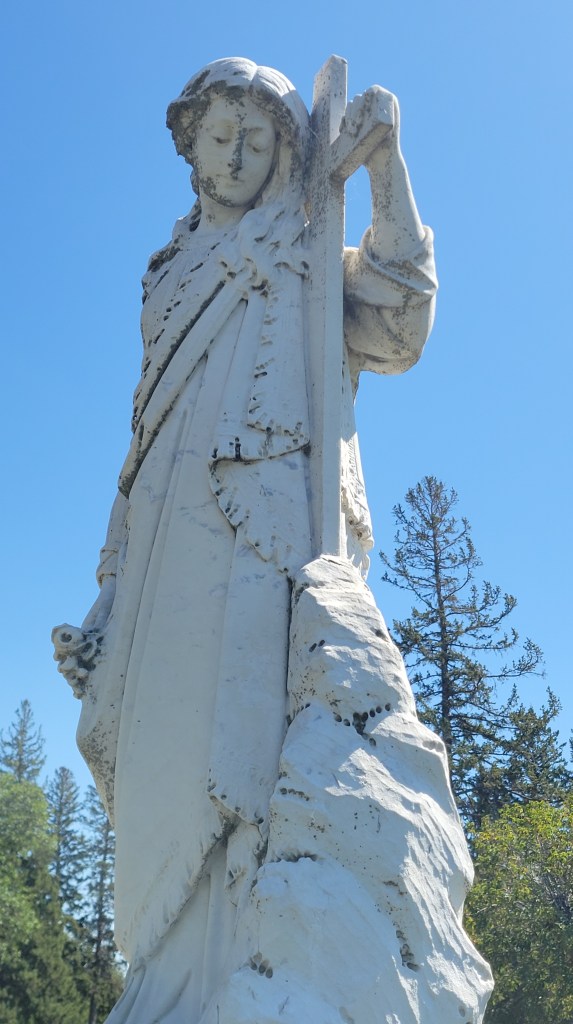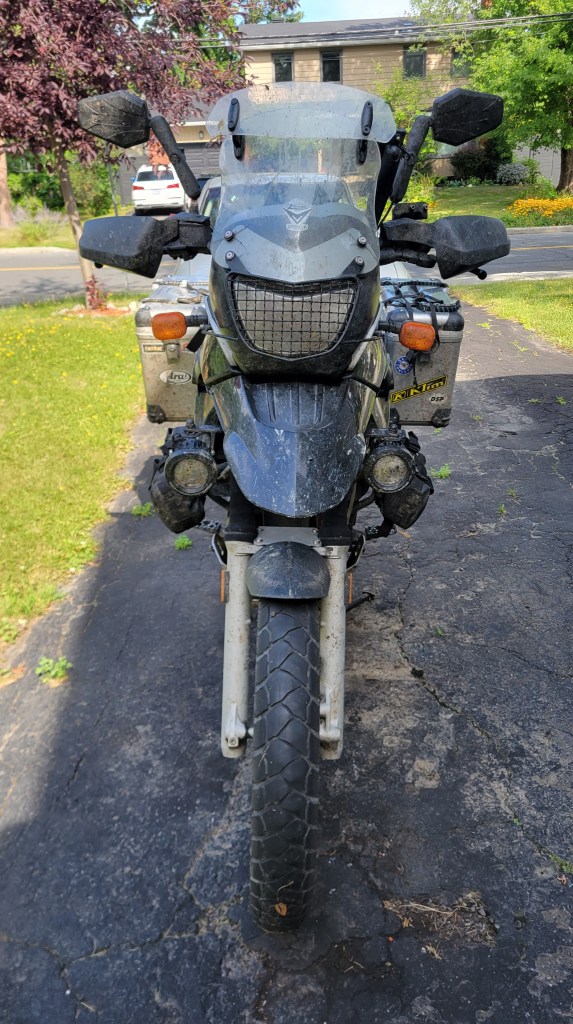
Some observations on Canada and long-distance touring
Most mornings, Facebook shows me a memory from this time last year, so over the past few weeks, I’ve been reliving my trip across the country, day by day. I’ve also been thinking about it as I write up these blogs, and now that I’ve completed the individual blogs on each segment of the tour, I thought I’d write some more general observations as I step back and reflect on the trip and the country as a whole. Here are five observations, in no particular order.
1. Six weeks isn’t nearly enough time to explore this vast country.
Canada is huge and the distances are immense. Our days were jam-packed, staying just one or two nights maximum at each place before we had to “push on” (a refrain on this tour). Yes, I crossed the country, twice, but far too much of that riding was on the Trans Canada and other major highways than I would have liked. In fact, it was only once I got off the freeway that I was able to experience any geography, history, and culture at all. My need to cover distance was in constant conflict with my desire to slow down and see more of what I was passing. I felt that this trip was really only an overview of many more to come, and I’ll need to spend six weeks in each province to really have a sense of the depth and diversity of Canada. So I’m going to consider this trip as exploratory; a deeper discovery of the country will have to wait until my retirement.
2. One tire cannot do it all.
I decided to use Michelin Anakee Adventure tires, an 80/20 street/off-road tire, because I wanted something relatively smooth and long-lasting for all the asphalt I would be covering. In the end, I was able to do the entire tour without changing my tires—that’s all 20,000+ kilometres on the same tire. This is what the rear looked like shortly after my return.

As you can see, there’s still some good tread left in this tire. So if it’s longevity you are looking for, the Anakee Adventure is a good choice.
However, I was vulnerable when I went off road, particularly up The Dempster. If it had started to rain, the dirt would have turned into mud and I would have been in trouble. The problem is that there were actually two very distinct kinds of riding on this trip: largely asphalt to cover the miles, and sections of dirt or gravel when I could afford it. Ideally, I’d have shipped more aggressive off-road tires out to BC and put them on before heading north. This is exactly what many people do: ship TKC 80s to Dawson City and put them on before hitting The Dempster. A 50/50 tire like the Heidenau K60 Scout would have been another option, but the more aggressive tread on those tires is noisy on the road, despite the centre strip. (In fact, in the 650GS tire size, there is no centre strip, and the rear flattens quite quickly.) The next time I attempt The Dempster, I’ll be starting in BC and will use an off-road tire, even if it means burning through that rubber on the pavement.
Another problem with the Anakee Adventure tires is that they are quite vibey on asphalt. The hard compound down the middle of the tire results in long tire life but at the cost of vibrations. I used my Kaoko throttle lock whenever possible but my right hand still developed some numbness and tingling. I’m convinced that if this were my regular tire choice, I’d develop nerve damage. The long days, day after day, led to numbness that didn’t completely dissipate for months after my return, well into the off-season. In this respect, I might have been better off with a 90/10 tire like the Michelin Anakee 3 than the Adventure.
In sum, if I were to do it all again, with 5,000 kilometres to cover before I get to serious dirt, I’d go with a true street tire to get me across the country, then switch to a true off-road tire for playing in the dirt once I’m out there. Adventure riding is all about compromises, but when your safety is involved, there are no compromises: if you are doing any technical or remote dirt riding, use an aggressive dirt tire.
3. French and the Problem of Québec
Everywhere I went, I heard French. I sat in a diner in Smooth Rock Falls, Northern Ontario, and heard four older men in the booth next to me speaking French. I sat at the base of the Nisutlin Bay Bridge, Yukon, during a rest stop and had a conversation in French with a man who has been living in Yukon for over 20 years but whose native language is French. I walked into a supermarket in Whitehorse and heard two people in the produce section talking in fluent French. I heard French in every province, and I’ve heard it of course in Acadian Nova Scotia and elsewhere on the east coast. The French language seems to be surviving just fine outside of Québec, without any Bill 101, ridiculous sign laws, or punitive Office de la langue française.
I mention this because, last May, the Quebec government passed Bill 96, which essentially extends Bill 101 beyond high school to the college level. What this means, among other things, is that all students graduating from any college in Quebec will now have to pass a French language test. It’s really more than a test of basic competency; students have to analyze a piece of French literature and write an essay exhibiting that understanding with a minimum of expression errors. Errors are counted and, after a certain amount, the student automatically fails. It’s quite difficult, and many students who have been educated in French their entire lives struggle to pass this required exam. Now even anglophone and allophone students who have gone through an immersion program in which some, but not all, courses are taught in French will have to pass the same test. It’s not clear yet how they are going to do that, or what kind of resources will be available to help them.
The rationale stated by François Legault and his Quebec government for these Draconian measures is that French is disappearing, but to my knowledge they’ve never actually presented any specific data to support this claim. Many of my friends and colleagues—not all English Quebecers, I should add—think this bill has little to do with protecting the French language and everything to do with cultivating a victim mentality in Quebecers, perpetuating the idea that they are somehow besieged by a foreign power such as the Federal Government (the favourite scapegoat) or English North America (as if North America were all English). Some even theorize that restricting access to education in English—except for those who can afford to send their children to private school, where such restrictions do not exist—keeps working class Quebecers “in their place,” just as The Catholic Church did until the Quiet Revolution of the 1970s. Even if French is in trouble—and I’m questioning whether it is—forced unilingualism is not the answer. In Europe, learning multiple languages is the norm, not the exception, even in countries like Hungary, which is a linguistic minority within a larger demographic, comparable to Quebec. (Elementary students there have the option of Hungarian and either English or German. I know because my son did a year of school in Hungary when he was in Grade 3.) Learning French does not have to be at the expense of learning English. We can teach both languages effectively, if there is the political will.
But the problem of Quebec extends beyond the issue of language. Quebec has managed to leverage the threat of separation successfully to entrench special privileges and special status within Canada. Many people might be surprised to know that Quebec gets more in equalization payments than all the other provinces combined. This is because, somehow, when those formulae were developed, Hydro Quebec was exempt from the calculations, making Quebec appear on paper like a have-not province. Removing Hydro Quebec, one of the province’s major employers, from Quebec’s calculations is like removing the oil and gas sector from Alberta’s. It’s time we opened up the equalization formulas and retooled them to make Quebec start pulling its weight in the confederation. There’s a lot of resentment out west towards the status quo, as evidenced by this poster seen outside an outdoor store in Northern BC.
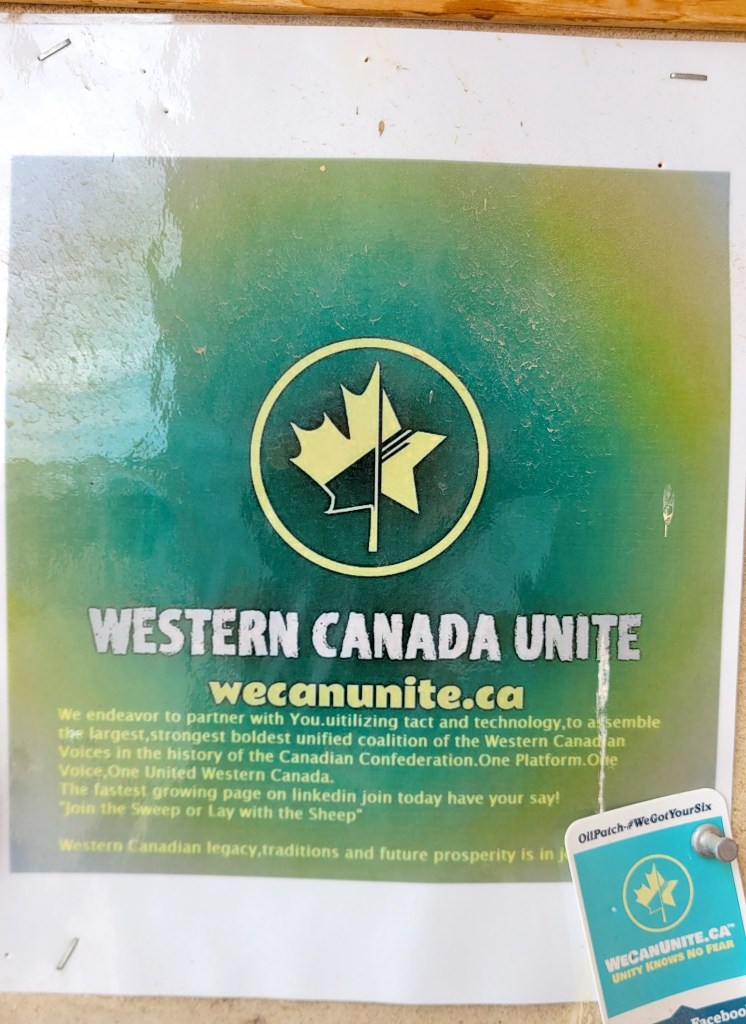
The sense out west that Canada is run by Ontario and Quebec is nothing new. Remember that The Reform Party started out west, as did The Green Party. Quebec is not a have-not province and doesn’t deserve special status or extra money. It’s time that Quebec decides to be either an equal player in Canada or to get out and become the nation it clearly pretends to be by using language like “national” programs, “national” parks, and a “national” holiday.
And while I’m on this subject, I’ll add that I was upset that Montreal did not have a Canada Day parade (July 1st) this year, and rumour is that there won’t be a budget for it in the future either. The decision to cancel the parade had nothing to do with Covid, as there was a Ste. Jean Baptiste parade just a week earlier. I think that if the Quebec government thinks so poorly of its membership in Canada that celebrating Canada doesn’t warrant a parade once a year, perhaps it should give back some of the $11.7 billion it receives of the total $19 billion in federal funds transferred to provinces (latest available numbers). But of course it won’t. Under the current cozy situation, Quebec would be foolish to separate. It’s become dependent on the hand-outs to subsidize an inefficient economy.
When my wife was living in Alberta, if she got sick, she’d phone her doctor and get an appointment for later that day. In Quebec, you’re lucky if you have a doctor. Health care is a mess, our roads are a mess, and as a teacher, I see everyday the effects of chronic underfunding in our education system. Yet Quebec has the highest taxes in North America. Where is all that money going? The Quebec government has replaced The Church as the benevolent Big Brother taking care of “its people,” an argument developed more fully in a recent op-ed piece by Vanessa Sasson. I’ve put “its people” in quotation marks because 99% of the Quebec civil service is still white francophones, a statistic that hasn’t budged since the 1970’s. Corruption and a bloated, inefficient civil service are draining the public purse; there are simply too many people at the trough.
Another controversial bill recently passed here in Quebec, Bill 21, targets religious minorities. It prevents anyone in the public sector, including doctors and teachers, from wearing religious symbols, as if those items would somehow influence or prejudice their work. For Christians, this isn’t a significant problem, but for many Muslims, Sikhs, and Jews, they must choose between their religious garb or their careers. No one should have to make that choice, certainly no one in the Canada I know. The standard line given by Legault to defend Bill 21 is that “the majority of Quebecers support it,” an argument that has at its heart the logical fallacy known as Appeal to Popularity (sometimes called Appeal to Ignorance.) I teach this fallacy by reminding my students that at one time slavery was the popular economic model. The fact that it’s popular doesn’t make it right.
Here’s a confession: in the last provincial election, I voted for Legault’s CAQ party. I was tired of paying half of my wages to the government and still having unacceptable roads, health care, and education standards. I was tired of the corruption in the construction sector that has held Montrealers hostage for decades. I’d heard of scandal after scandal at all levels of government, and hoped that Legault, a co-founder and CEO of Air Transat before going into politics, would be a fiscal conservative with the strength of character to do some much-needed restructuring of the Quebec economy. But he hasn’t done anything of the sort. Instead, he’s focused almost exclusively on a social agenda to solidify his grip on power, playing to his rural base and exploiting the most repugnant racist and xenophobic aspects of Quebec society.
What has Prime Minister Trudeau done about this wave of racial nationalism gathering in Quebec? Nothing. Absolutely nothing. He needs the Quebec vote too much in order to cling onto his own weakening power. So while he talks a lot about values and morals and draws a hard line against those he claims hold “unacceptable views” in Canada, he allows the Legault government to crap all over the Charter of Rights and Freedoms his dad helped draft and ratify, unwilling to protect religious and linguistic minorities in his home province.
If he had reformed the electoral system, as promised, and made every vote count, regardless of where you live, he would not be so beholden to “the Quebec vote.” But of his three major election promises—reform the electoral process, reform the Senate, and legalize pot—he’s managed to legalize pot. The other two promises were dropped once he learned, after studying the matters carefully (at considerable expense to taxpayers), that they were not politically advantageous to him and his party. Prime Minister Trudeau talks a lot about social justice, equity, and protecting minorities, but he is essentially—we must remember—a drama teacher. He’s acting, and these days there isn’t much genuine coming out of his mouth.
I don’t usually get this political in my blog, and I don’t really want this place to become heavily politicized. But I love this country, and if I can’t get off my chest here, in a blog reflecting on Canada, what I think are some problems we are currently facing, then where can I? And I feel that, having lived in Quebec since 1990, I’m qualified to give some constructive criticism of it. No one else is. You don’t have to agree with my observations and comments, but like in my teaching, I say if we can’t have civil and open discussions about difficult issues, then our problems run deeper than the health of the French language or the status of Quebec in Canada. What do you think? Feel free to drop a respectful comment below.
4. The Orange Summer

All summer long I saw orange garments hanging randomly in trees, and church steps lined with children’s shoes and toys. Some people have referred to last summer as The Orange Summer, a time of reflection and reckoning in the hope of eventual reconciliation. We are very early in this process and much has still to be determined with regard to what a reconciliation would look like. I don’t really have any suggestions, nor is it really my place to make them. But I believe that all relationships are healed through communication, so let’s start there. I believe we will get further faster by talking than pulling down statues. What is clear is that there is an enormous amount of pain out there to be addressed. I thought it was à propos that on my final day of riding, as I rode the 417 down from Sault Ste. Marie, I passed on a stretch of that highway a small contingent in orange T-shirts walking with police escort at the side of the road. A sign on a support vehicle read “Walk of Shame.” I recently saw another roadside sign, this one in Kahnawake, indigenous territory on the south shore of Montreal. This one read, “Legault, hands off our children,” a clear reference to both Bill 96 and residential schools. Are we making the same mistakes again—an authoritative government who think they know best what is right for your children? Have we learnt anything through years of suffering?
Let’s hope that the indigenous peoples of Canada get an apology from Pope Francis when he visits next week. It’s long overdue and a crucial element in collective healing. Then we need a thorough investigation into what happened to those children and hold those to blame accountable. There’s much more to address—difficult work of hashing out treaties—but it seems to me that would be a good start.

5. Heat and the Big Thumper
The 650GS did great the entire tour. I really can’t complain. With over 100,000 kilometres on it and fully loaded, it pulled Marilyn and me over those Rocky Mountain passes in the heat, and it was hot! The battery let me down a few times, but the mechanics of the bike are sound. It’s a great little adventure bike.
Are you sensing a but, dear reader? The 650GS is happiest under 100-110 km/hr, and much of my riding on this tour had to be >120 km/hr, just to cover those distances. This is a bike for secondary highways, not freeways. It is a classic European touring bike, but all of Europe is about the same size as Canada. Those days crossing the prairies, 6+ hours at 5,500 rpm, were not fun, and as I’ve said, I developed some numbness in my throttle hand due to vibrations. By the time I rolled back into the driveway, I was ready for something a little more powerful and a lot smoother.
I also found it difficult to regulate oil level during this tour. It’s difficult with the dry sump system at the best of times, but the varying temperatures and types of riding on this tour made it all the more challenging. The extreme heat, and riding at high revs for hours, led at times to oil rising so high in the reservoir that it spilled into the air box, where it leaked down the side of the engine and baked onto the skid plate.


Shake and bake
It’s possible that I over-filled the bike, but rather, perhaps I was just asking it to do a little more than it was designed to do. I’ve been pushing this bike beyond its limits on and off road.
People have since told me that, for a tour like this, I should have used a 1200 or 1250GS. The big boxer cruises at 120 km/hr, and like its predecessor of another era, the Honda Gold Wing, it eats up the miles. I’ve considered getting a big GS, but I like the dirt too much, and my skills just aren’t capable of taking a 600 lb. bike off road. I’ve had my eye on the Yamaha Ténére 700 (T7) for some time, and the World Raid version looks just the thing for my long distance adventures. Unfortunately, once it gets to Canada, it will be probably close to $20G—a little beyond my budget for now.
I also considered an 800GS. This would be the obvious upgrade to the 650, with a similar Rotax engine and the fuel tank under the seat. But a parallel twin is also prone to vibrations at highway speeds; isn’t it basically a big thumper but with two cylinders? So I started looking at it’s main competitor, the Triumph Tiger 800. From everything I’ve read, the essential difference between the two bikes is that the BMW is better off road, the Triumph better on road. That inline triple has a lot of character and is silky smooth. With 94 hp, it has more than enough power for two-up touring. And if I am being completely honest, most of my riding is on road, even when touring.
So here is my big announcement. After a lot of research, I’ve bought a 2013 Triumph Tiger 800XC. It only had 14,500K on it, so looks and feels practically new. It has been maintained well with regular service and always stored in a heated garage. I’ve put over 7000K on it already this summer and love riding this bike! I can’t wait to do some long-distance touring on it.
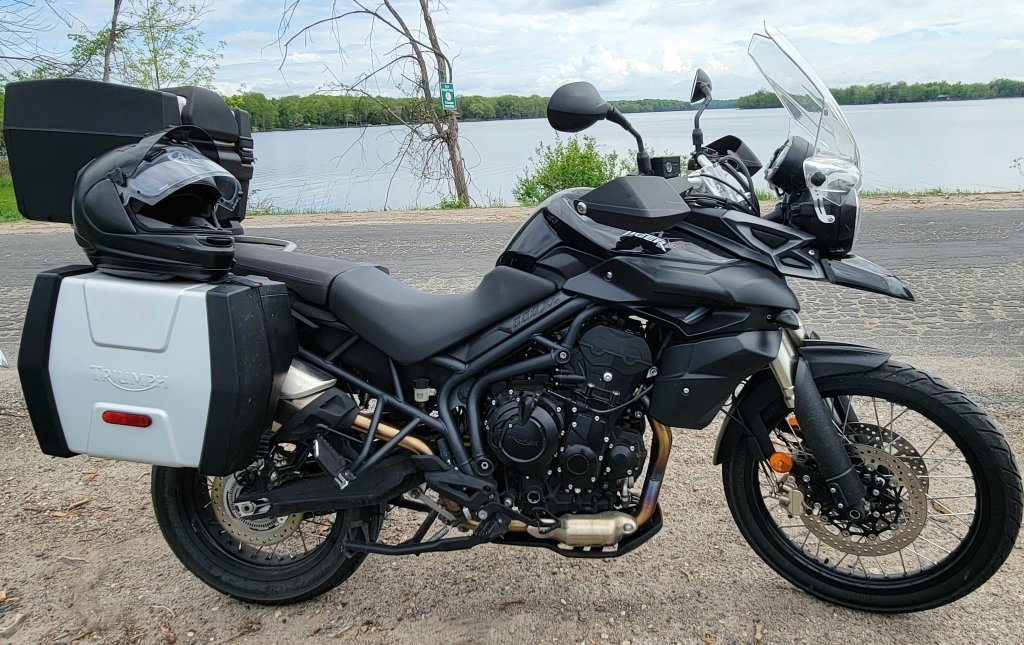
Don’t worry: the blog is not changing its name. I will continue to write about my adventures here, having built a little following. I’ve ordered crash bars and a beefier skid plate and so the slow conversion to off-road riding has begun. But for this summer, I’m happy to ride it stock with street tires and just enjoy this engine. It looks, feels, and sounds like a jet, so that’s what I’ve named it.
As for Bigby, I’ll be selling it when the market heats up at the end of season. I know that many potential buyers will be nervous about buying a bike with that many kilometres on it, but anyone who knows the 650GS knows that the engine is bullet-proof and that these bikes are over-engineered. There’s still plenty of good riding and adventures to be had on Old Faithful.
As I write this, we are about halfway through the summer. I’ll be taking the Tiger on day trips and perhaps a few overnights, but mainly just getting familiar with it. I’m planning a similarly big east coast tour with it for next summer and so will be getting some stronger panniers and doing other mods to set it up for adventure touring. I’ve received some queries from readers about my gear, so I’ll also be writing some blogs about what has worked for me. I hope you will stay with me, regardless of what you ride, as we continue the journey.

